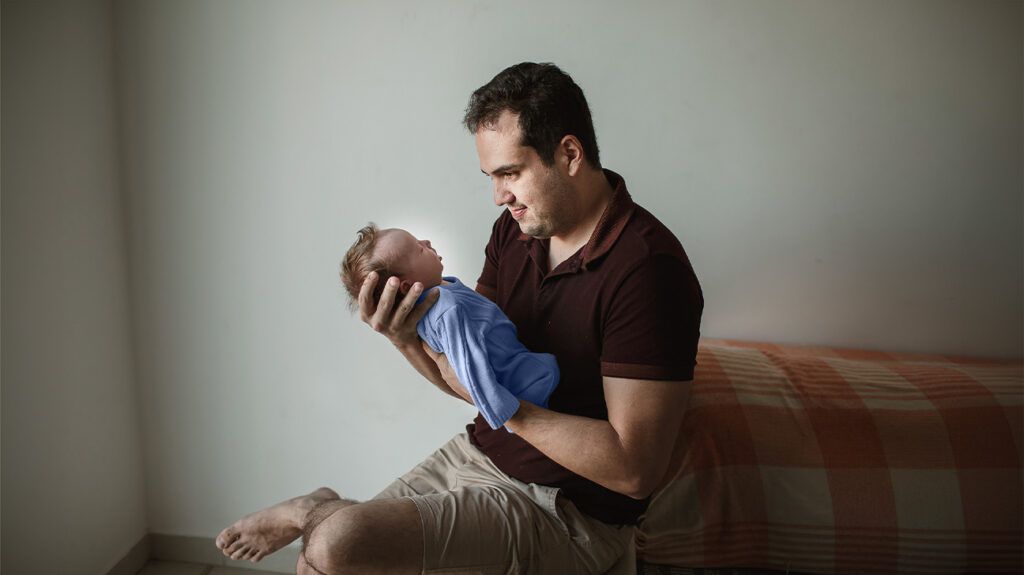Croup is a childhood respiratory condition that affects the windpipe, voicebox, and airways within the lungs. Most cases are mild and resolve within days. Severe cases are rare but require emergency treatment.
Typical symptoms of croup include a barking cough and an irregular high-pitched sound when breathing in.
Some of the more serious symptoms that warrant emergency medical treatment include labored breathing, bluish skin discoloration, and atypical drowsiness or sleepiness.
This article outlines the symptoms of croup, including those that warrant emergency treatment.

According to a
In the United States, croup accounts for around
According to the National Health Service (NHS), a child showing any of the following croup signs or symptoms requires emergency medical treatment:
- a worsening cough or rasping sound when breathing
- severe breathing difficulties
- rapid breathing, which may leave the child too breathless to feed or talk
- a lack of breathing sounds coming from the chest
- tightness or “pulling in” of the skin around the ribs
- inability to drink fluids
- skin that appears dark, blue-tinged, or pale
- atypical drowsiness and sleepiness
- signs of distress or agitation
Parents or caregivers who notice any of the above signs or symptoms in their child should take the child to their local hospital emergency room (ER) right away.
The
- a barking cough
- stridor,
which is an unusually high-pitched sound when breathing in - difficulty breathing
- a hoarse voice
Additional signs and symptoms may include:
According to the Children’s Hospital of Philadelphia, croup symptoms typically worsen at night.
In some cases, croup can cause severe breathing difficulties. This can result in insufficient oxygen delivery to the body’s organs and tissues.
Some of the more serious symptoms of croup include:
- signs of labored breathing, such as nasal flaring, or prominence of the breastbone or ribs when breathing in
- cyanosis, which is bluish discoloration of the skin, lips, and nailbeds, indicating not enough oxygen
- atypical drowsiness, disorientation, or sleepiness
Severe croup is rare, affecting less than
Children with moderate to severe croup
Nebulization is a way to give medication using a device called a “nebulizer.” The nebulizer turns liquid medications into a mist that a person inhales through a mouthpiece or mask.
Dexamethasone is a corticosteroid that helps reduce inflammation in the airways, resulting in easier breathing.
Children with low levels of oxygen might also need extra or supplemental oxygen.
The 2023 review explains that viruses are the most common cause of croup, though some cases are due to bacterial infections.
According to the NHS, the parainfluenza virus is the most common cause of croup. Other viral causes include:
- the common cold virus
- influenza A and B
- the measles virus, in children who have not received the measles vaccine
- enteroviruses
- respiratory syncytial virus (RSV)
Less common causes of croup include:
- inhaling a small object
- inhaling chemical irritants
- having an allergic reaction to pollen, dust mites, or other substances
- living with epiglottitis, which is inflammation of the epiglottis in the throat
- having acid reflux
According to the NHS, most cases of croup are viral and, therefore, difficult to prevent.
The following methods may help lower a child’s risk of developing croup:
- Practice good hygiene, which includes regularly washing hands and sanitizing surfaces.
- Ensure that the child has received routine vaccinations to help protect against croup-causing infections, such as:
- measles
- haemophilus influenza type B
- strep pneumoniae
Croup is a common childhood respiratory infection that affects the windpipe, voice box, and airways within the lungs.
Symptoms are usually mild and resolve within a couple of days. However, a small number of children develop severe croup symptoms that require emergency medical treatment.
Symptoms of severe croup to look out for include labored breathing, bluish skin discoloration, and atypical drowsiness or sleepiness.
Parents or caregivers who witness any of these symptoms in their child should take the child to the emergency room right away. Doctors will administer medications to lower inflammation in the airways and ease breathing.
